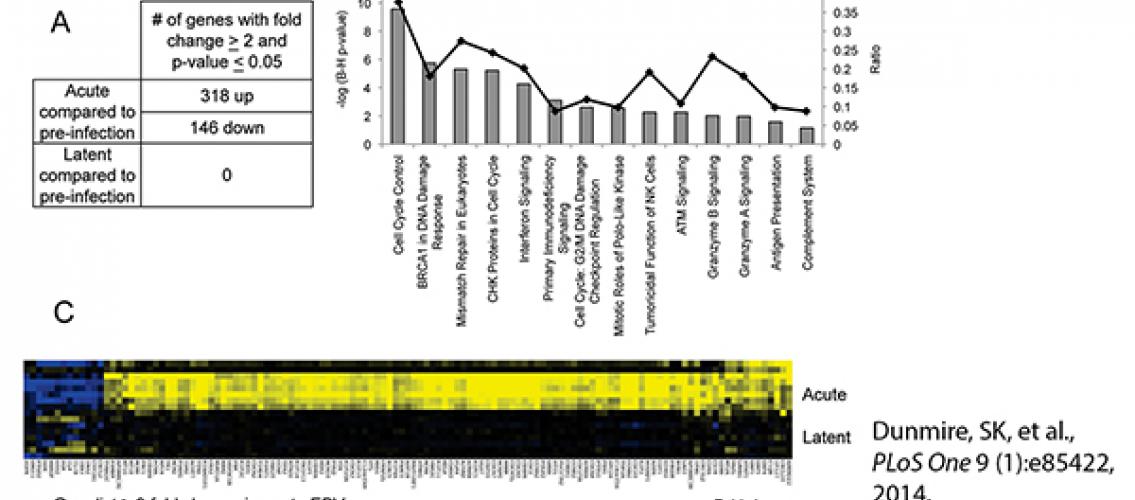
Epstein-Barr Virus (EBV) is a common virus in the human herpes family. It is well known as the cause of infectious mononucleosis, but it also is associated with some forms of cancer and with autoimmune diseases such as systemic lupus erythematosus and multiple sclerosis. Much of the population is infected with EBV with no symptoms, but we don’t understand why some individuals become sick while others do not. There is no vaccine and no treatment for EBV infection.
MSI Principal Investigator Kristin Hogquist, a professor in the Department of Laboratory Medicine and Pathology and Center for Immunology (Medical School), and her University of Minnesota colleagues recently investigated immune responses to EBV. They used transcriptome analysis to study the immune responses of patients who acquired EBV infections naturally. They found an interesting gene expression profile during acute infection, but no lasting changes during latent infection. They also discovered similarities in responses to EBV and the Dengue fever virus. These results provide important new information relating to natural herpesvirus infections.
The results of this research were published in the journal PLoS One (Dunmire, Samantha K., Oludare A. Odumade, Jean L. Porter, Juan Reyes-Genere, David O. Schmeling, Hatice Bilgic, Danhua Fan, Emily C. Baechler, Henry H. Balfour Jr., and Kristin A. Hogquist. 2014. Primary EBV infection induces an expression profile distinct from other viruses but similar to hemophagocytic syndromes. PLoS One 9 (1) (JAN 17), 10.1371/journal.pone.0085422). Dr. Kevin Silverstein, of MSI’s RISS group, provided assistance to the authors with bioinformatics analysis and software. The paper can be read on the PLoS One website.
Image description: A distinct gene expression profile is apparent during acute EBV infection, but not latent infection. (A) Microarray analysis was performed on pre-infection, acute, and latent timepoints for 10 subjects with primary EBV infection. 464 genes were shown to be significantly changed during the primary response to EBV at a fold change of ≥ 2 and a p-value of ≤ 0.05. No genes were significantly changed during the latent phase of infection using the same criteria. (B) Ingenuity Pathway Analysis of the 464 acute genes revealed 14 pathways that were enriched amongst the genes that changed during primary EBV. These had a significant p-value (the negative log is shown) following evaluation with the Benjamin-Hochberg multiple tests correction. (C) A heatmap representation of the highest (≥ 3 fold) gene changes during the acute and latent stages of EBV infection. (Image and description, S.K. Dunmire, et al., PLoS One 9 (1) (JAN 17), 10.1371/journal.pone.0085422).
posted on October 1, 2014